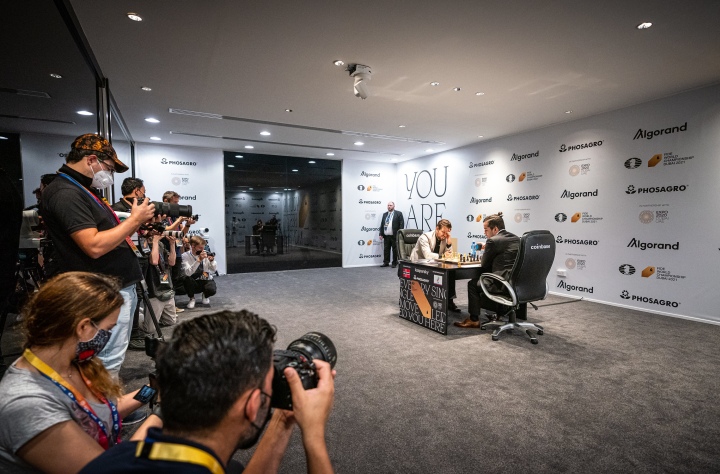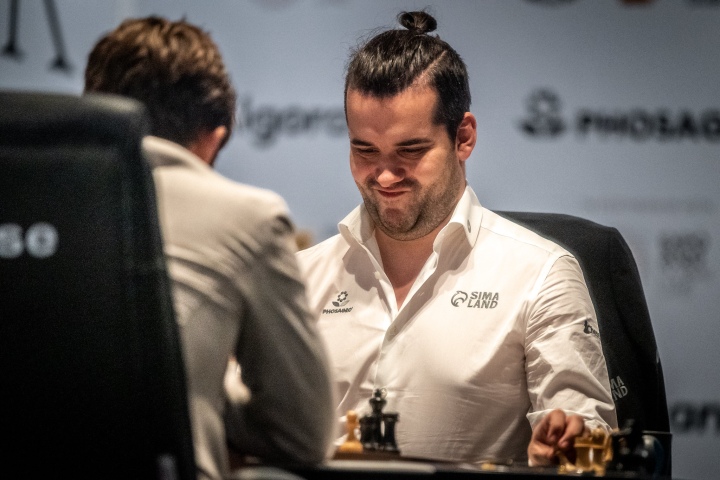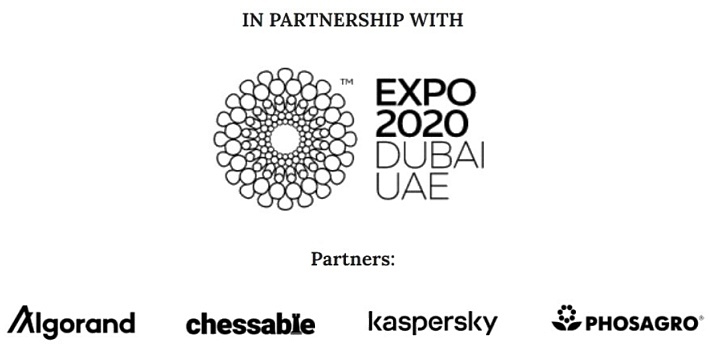Literal midpoint
This year’s FIDE World Championship is asymmetric – 14 games long – and a departure from the recent format of a 12-game duel. The biggest difference is the mid-way review, since we don’t have two equal halves but mirrored halves. Challenger Ian Nepomniachtchi has had the advantage of the white pieces and first move in 4 games so far, but trails champion Magnus Carlsen 4-3.
To get an idea of the size of the task ahead, Carlsen holds the world record for an undefeated streak, 125 consecutive games stretching over 26 months. This is, of course, uncharacteristic, but there are two essential factors to consider: Here in Dubai, Magnus could play more cautiously than he did during that streak; but there should be considerably more nervous tension in each of the seven possible games remaining here.
Halfway up the mountain
With this in mind, the remaining games of Dubai 2021 will presumably pivot around a recurring theme – the actual advantage of the white pieces in a title match. Given Magnus’ career indestructibility, drawing level with him when he also has a majority of whites down the stretch can start to feel like scaling Everest.
The percentage call now could be for the champion to immediately cease taking any risk with white, and curtail his early strategy of sacrificing pawns in search of active pressure. This would send a strong signal that his opponent would have to ramp up his risk levels, allowing Carlsen chances to increase his lead by punishing overambitious play.
That said, the champion has been very hard to predict in terms of overall match strategy, and as a maximalist, he might try to break his adversary with another win. The opening phase of game eight, which will balance the colours once more, should reveal much about what Carlsen intends to do from here.
Game eight
The challenger appeared on stage early today, with the champion joining him quickly when announced by ringside Master of Ceremonies Maurice Ashley. The ceremonial first move was executed by a celebrity that probably excited avid Real Madrid fan Carlsen – footballer Michel Salgado, who played 251 times for the Spanish footballing powerhouse between 1999-2009. Salgado took Carlsen’s cue to play 1.e4, and this was not reset for the official start, Magnus simply adjusting it and hitting his clock to make the pawn move official.

Quiet message?
Nepomniachtchi, as in game 4, replied with the rock-solid and symmetric Petroff, or Russian Defence, showing that he was not yet prepared to move to sharper ground in terms of an opening choice. Carlsen’s choice was even more telling, as he initiated a series of early trades that made the position more sterile.
The champion is known for making something out of nothing, but the utter safety of his early play was seen by experts as a declaration of intent. He will not be making things interesting just now, and the task of risk-taking will become ever more the responsibility of the trailing challenger.
However, opinions began to shift as Nepomniachtchi sank into deep thought over his 9th move. His quick 8th move, maintaining visibly safe symmetry, was suddenly under scrutiny. Now Carlsen was being praised for cleverly veiled tactics, his apparently harmless continuation concealing an unexpected drop of poison. After nearly 17 minutes of thought, the challenger upset the symmetry, and the contours of a fight began to form from the optical sterility

Confusion
The total exit from preparation was signalled by Carlsen’s reaction to Nepomniachtchi’s bold 9th – a very lengthy think of his own. After over 40 minutes of thought, the champion surprised commentators with an unexpected move.
Pundits were even more confused by the challenger’s reply to this, with Nepomniachtchi opting to avoid what looked like a roughly equal ending for a more complex but also more uncomfortable position with the queens on the board.
Unforced errors
Despite some simplifications, the game contained subtle nuances until the challenger appeared to crack under gentle pressure. Ian’s 21st move blundered a pawn, and gifted the champion winning chances that could put the match out of reach. The challenger grimaced in apparent pain and began to repeatedly leave the stage after moving, preferring to stay and occasionally think from his rest area.

After white’s 33rd move, in a hopeless position, the challenger rested his head on the table, face down in his folded arms, occasionally giving a resigned smile and shake of the head. Nepomniachtchi soldiered on, but after 46 moves, accepted the inevitable.
Speaking immediately after the game, Carlsen echoed much of the expert commentary, saying he had been puzzled by his opponent’s 10th move. ‘I’m tired, let’s see if can get a tiny advantage, otherwise, I can make a draw,’ was how he felt at that point but was then encouraged to press on.
Press conference
Ian called some of his early decisions ‘silly’ and ‘impractical’, but didn’t feel he had been in much danger, only feeling slight pressure before committing his serious oversight on move 21. Carlsen confessed to being very tired when thinking for 40 minutes on move 10 and then opting for an ‘insipid’ move. “My brain was just fried. I felt a sharp battle was not in my interests,” the champion explained.

Much of the Q&A session centred around how to handle a two-game deficit or advantage. Asked what kind of reaction to this situation had been prepared, Ian had a simple answer: “Obviously, this wasn’t planned!”
Carlsen wasn’t going to be drawn when asked if his lead meant a future strategy of trying to shut the remaining games down safely. “We will see, won’t we? The match clock is ticking down, and that is in my favour.”
Time to regroup
The players get a much-needed rest day tomorrow, both having admitted that the marathon in game six had disrupted their rhythm and rest. The match resumes on December 7, with challenger Ian Nepomniachtchi having the advantage of the white pieces in game nine.
FACT SHEET, Game 8, FIDE World Championship:
White: Magnus Carlsen
Black: Ian Nepomniachtchi
Result: 1-0
Match score: 5-3
Game length: 46 moves
Opening: Petroff/Russian Defence
Text: Jonathan Tisdall, Press Officer press@fide.com
Photo: Eric Rosen and Niki Riga
Official website of FIDE World Championship Dubai 2021


